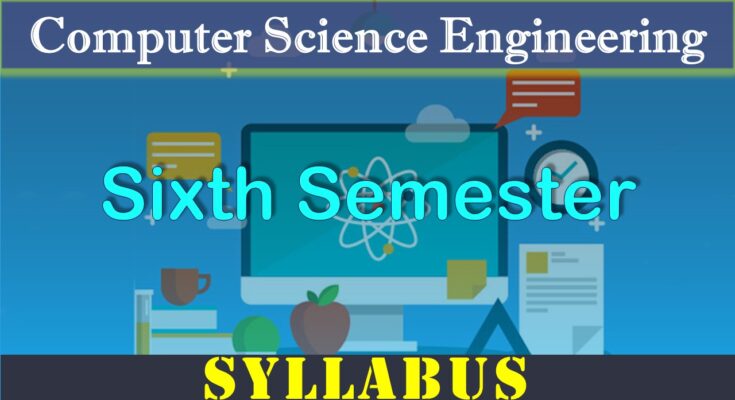Syllabus B Tech Computer Science Sixth Semester Computer Architecture CS603
The concepts developed in this course will aid in quantification of several concepts in Computer Science Engineering that have been introduced at the Engineering courses. Technology is being increasingly based on the latest Syllabus B Tech Computer Science Sixth Semester Computer Architecture CS603 is given here.
The objective of this course “Syllabus B Tech Computer Science Sixth Semester Computer Architecture CS603“ is to develop ability and gain insight into the process of problem-solving, with emphasis on thermodynamics. Specially in following manner: Apply conservation principles (mass and energy) to evaluate the performance of simple engineering systems and cycles. Evaluate thermodynamic properties of simple homogeneous substances. Analyze processes and cycles using the second law of thermodynamics to determine maximum efficiency and performance. Discuss the physical relevance of the numerical values for the solutions to specific engineering problems and the physical relevance of the problems in general and Critically evaluate the validity of the numerical solutions for specific engineering problems. More precisely, the objectives are:
- To enable young technocrats to acquire mathematical knowledge to understand Laplace transformation, Inverse Laplace transformation and Fourier Transform which are used in various branches of engineering.
- To introduce effective mathematical tools for the Numerical Solutions algebraic and transcendental equations.
- To acquaint the student with mathematical tools available in Statistics needed in various field of science and engineering.
CS 603 – Computer Architecture
Books Recommended
1. Kai Hwang, “Advanced computer architecture”, TMH.
2. J.P.Hayes, “computer Architecture and organization”; MGH.
3. V.Rajaranam & C.S.R.Murthy, “Parallel computer”; PHI Learning.
4. Kain,”Advance Computer Architecture: -A System Design Approach”, PHI Learning
5. M.J Flynn, “Computer Architecture, Pipelined and Parallel Processor Design”; Narosa Publishing.
6. Hwang and Briggs, “Computer Architecture and Parallel Processing”; MGH.
7. David E. Callav & Jaswinder Pal Singh Marge Kaufmann”Advance Computer Architecture”,EIS India.
8. Sajjan G. Shiva, Taylar & Francis, “Advance Computer Architecture.


